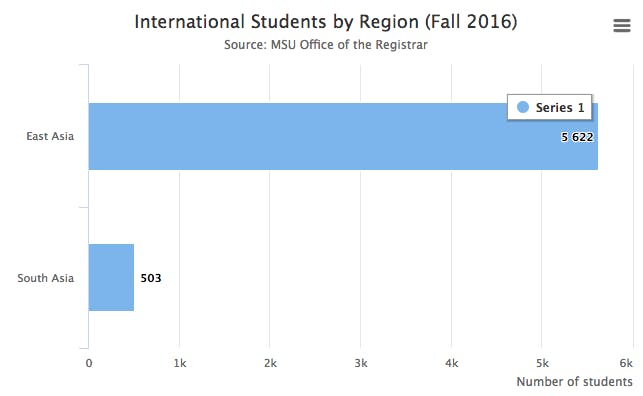Before the 2016 election, public policy junior Sarah Vang was walking a distance behind a group of women who were approached by another woman with a clipboard. The woman asked if they were registered to vote, and when they said yes she let them go on their way, Vang said.
That’s when Vang purposely started walking slower. She wanted to see if the woman would ask her to vote, she said. Even when Vang was right in front of her and there was no one else around, the woman didn’t ask her if she was registered. Vang said she believes this might be because the woman thought she was an international student, as Vang is Hmong-American.
“I’ve been mistaken as an international student, and that does make me feel like me growing up here for 20 years, and my family’s been here for almost 30 years, and I feel like that kind of gets overlooked and people don’t really see me as American even though I’ve been here all my life,” Vang said.
Vang and journalism junior Emily Liebau are co-presidents of the MSU organization Asian Pacific American Student Organization, or APASO. They said although it might be in different forms than it is for other ethnic groups, Asian-Americans still face discrimination on campus.
“I feel like oftentimes when I’m in class or in a group of people who are not Asian, I feel like I have to make sure I speak English really clearly or always have to feel like I have to prove myself,” Vang said. “Like, ‘Hey, I’m not international, I’m American.’”
Besides being mistaken as international students, Vang and Liebau said there are other challenges Asian-Americans face, one of which is the “model minority myth.”
“The model minority myth usually applies to Asian-Americans, and we’re often seen as the model minority group that is academically, economically doing really well,” Vang said. “So they overcome anything.”
According to the Pew Research Center, 19 percent of Asian-Americans said they had “personally faced discrimination in the past year” between 2000 to 2010. During that time period, 61 percent said being Asian-American made no difference on their admission to school and college and 62 percent said it made no difference while looking for a job.
Liebau said she has been affected by the model minority stereotype. Ever since she was in elementary school, kids teased her for being bad at math because she was Asian.
“It’s the little things like when you’re in elementary school, but then it becomes bigger things when it continues all the way up to college,” she said.
As a Filipino-American, Liebau said some people don’t consider her Asian, even some members of her family.
Asia is not only the largest continent in the world, but it is also the most populated, according to worldatlas. It includes regions such as India, Malaysia, the Philippines and Indonesia.
“We’re all extremely different,” Liebau said. “We have different traditions and languages and just cultures overall.”
Liebau said although all of the different Asian cultures are rich and intricate, stereotypes generalize and simplify them. Not only does it categorize all Asians as smart, but it causes other ethnic groups to be looked down upon, she said.
Since the presidential election, Vang and Liebau said there has been a rise in prejudice against not only Asian-Americans, but many different ethnic groups. Liebau recounted an incident she heard about from a friend where an Indian teaching assistant was told to get out of the country and go back to her own in the middle of a lecture.
Liebau said it was scary that people were telling others to do something as serious as leave the country. She said there needs to be more conversations than arguments and that people can’t diminish what people are feeling by saying everything is going to be OK.






